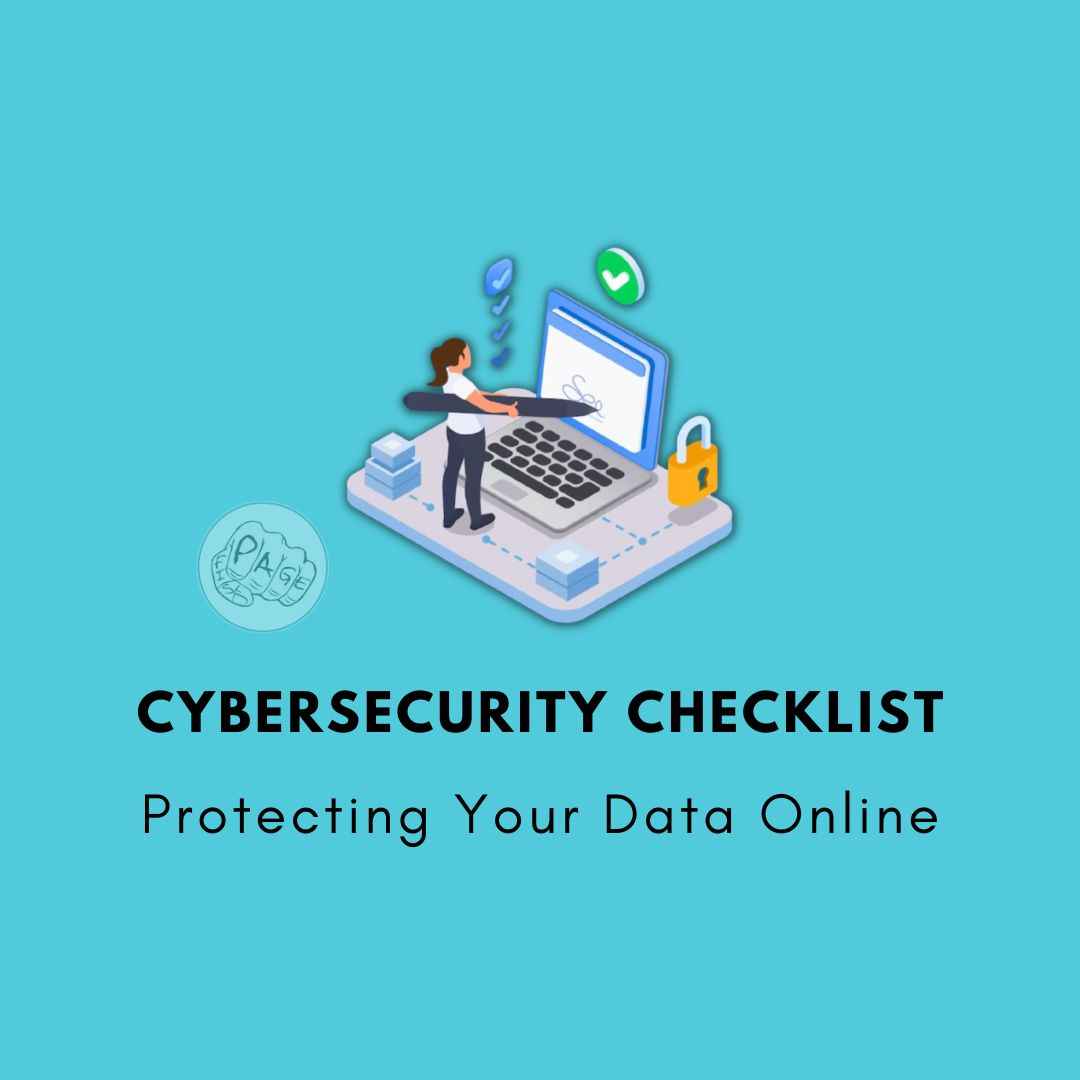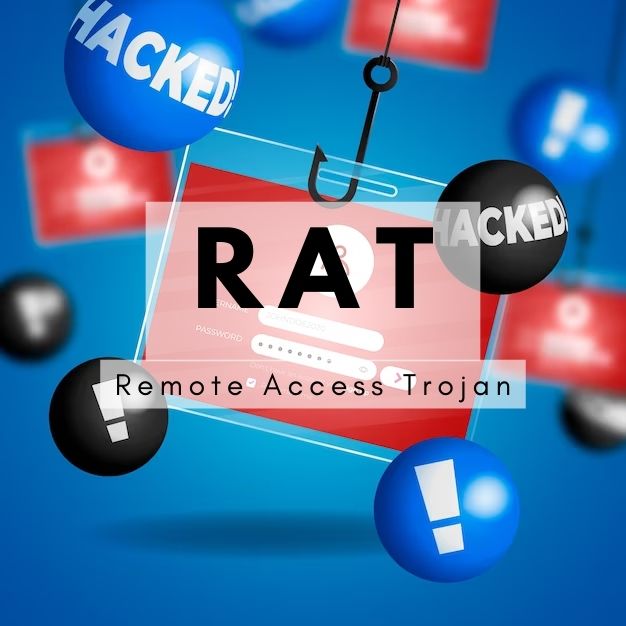Cybersecurity Checklist: Protecting Your Data Online
Discover the ultimate Cybersecurity Checklist for safeguarding your valuable data online! Learn expert tips, tricks, and strategies to keep your information secure in the digital age.
Introduction
Welcome to the digital era, where the internet has become an integral part of our daily lives. From online shopping and social media to banking and work, we rely on the virtual world more than ever. While this connectivity brings convenience and endless opportunities, it also exposes us to various cybersecurity threats. With hackers lurking in the shadows, it's crucial to fortify your defenses and protect your data online.
In this comprehensive guide, we'll walk you through the Cybersecurity Checklist: Protecting Your Data Online. Whether you're a tech-savvy enthusiast or just someone looking to secure their online presence, these tips and tricks will help you navigate the digital landscape safely. So, grab your virtual hard hat, and let's dive in!
Section 1: Strengthening Your Digital Fortress
1.1 Update, Update, Update!
You've probably heard it a thousand times, but it bears repeating: Keeping your software, operating systems, and apps up to date is your first line of defense. Hackers love to exploit vulnerabilities in outdated software, so don't give them the chance!
Pro Tip: Enable automatic updates whenever possible to ensure you're always protected.
1.2 Passwords: The Digital Locks
Passwords are the keys to your digital kingdom, and you wouldn't leave your house unlocked, would you? Here's what you need to do:
- Use strong, unique passwords for each account.
- Incorporate a mix of uppercase and lowercase letters, numbers, and special characters.
- Consider using a reputable password manager for added security.
Pro Tip: Change your passwords regularly, and never, ever use "123456" or "password" as your password!
Section 2: Surfing the Web Safely
2.1 Secure Your Browsing
Your web browser is your gateway to the internet, so make sure it's locked down tight:
- Keep your browser updated.
- Install reputable ad-blockers and pop-up blockers to fend off malicious ads.
- Disable unnecessary browser extensions.
Pro Tip: Use HTTPS Everywhere extension to ensure encrypted connections on websites.
2.2 Beware of Phishing
Phishing attacks are like digital fishing expeditions, and you don't want to be the catch of the day. Watch out for:
- Suspicious emails asking for personal information or money.
- Links that look legitimate but redirect to fake websites.
- Requests for sensitive information from unknown sources.
Pro Tip: Hover over links to see the actual URL before clicking on them. When in doubt, verify with the sender.
Section 3: Safeguarding Your Devices
3.1 Device Encryption
Encrypting your devices adds an extra layer of security, ensuring that even if your device falls into the wrong hands, your data remains inaccessible:
- Enable full-disk encryption on your computer and mobile devices.
- Set a strong passcode or PIN for your smartphone.
- Use biometric authentication if available (fingerprint or facial recognition).
Pro Tip: Don't forget to enable remote wipe capabilities in case your device is lost or stolen.
3.2 Backup Your Data
Data loss can be catastrophic, but regular backups are your safety net:
- Schedule automatic backups of your important files and documents.
- Use both cloud and physical backups for redundancy.
- Test your backups to ensure they can be restored when needed.
Pro Tip: Encrypt your backups to prevent unauthorized access.
Section 4: Staying Safe on Social Media
4.1 Privacy Settings
Social media is a treasure trove of personal information, and you must protect it:
- Review and adjust your privacy settings regularly.
- Limit the information visible to the public.
- Be cautious about sharing personal details, especially your location.
Pro Tip: Avoid oversharing; you don't need to broadcast your every move to the world.
4.2 Recognize Social Engineering
Cybercriminals often use social engineering tactics to trick you into revealing sensitive information:
- Be skeptical of unsolicited friend requests and messages.
- Don't click on suspicious links or download files from unknown sources.
- Verify the identity of people and organizations you interact with.
Pro Tip: Trust your instincts—if something feels off, it probably is.
Section 5: Shopping and Banking Securely
5.1 Trusted Websites Only
When shopping or banking online, it's essential to trust the websites you use:
- Verify the website's authenticity by checking for HTTPS and a padlock icon in the address bar.
- Avoid clicking on links in emails; instead, type the website's URL directly into your browser.
- Use a credit card or secure payment methods for online transactions.
Pro Tip: Keep an eye out for typos and unusual URLs; scammers often create fake sites that mimic legitimate ones.
5.2 Monitor Your Accounts
Regularly monitoring your bank and credit card statements can help detect fraudulent activity early:
- Set up account alerts for unusual transactions.
- Check your statements and report any discrepancies promptly.
- Use two-factor authentication for online banking and shopping accounts.
Pro Tip: Save receipts and confirmation emails for your online purchases.
Conclusion
In the ever-evolving landscape of the digital world, safeguarding your data online is non-negotiable. The Cybersecurity Checklist: Protecting Your Data Online serves as your trusty guide to navigating the complex realm of cybersecurity.
Remember, hackers are always looking for new ways to exploit vulnerabilities, but with the right precautions and a vigilant mindset, you can stay one step ahead. So, follow this checklist religiously, stay informed about the latest threats, and keep your digital fortress secure. Your data—and your peace of mind—will thank you for it!
Now go out there and conquer the digital realm with confidence, armed with the knowledge to protect your data online like a pro!
Share This Post
Related Articles
How to Protect a Website From Cyber Attacks
Securing a website is an essential task for any web developer or administrator. A website that is not secure can expose sensitive data, compromise user privacy, and become a target for malicious attacks.
Vulnerability assessment
A vulnerability assessment is a process of identifying, analyzing, and prioritizing the risks and weaknesses of a system or network. It helps to determine the level of exposure to potential threats and the impact of a breach or attack. A vulnerability assessment can also provide recommendations for mitigating or resolving the identified vulnerabilities.
What is Social Engineering in Cyber Security?
Social engineering is a form of cyberattack that exploits human psychology and behavior to manipulate, deceive, or coerce people into revealing sensitive information or taking actions that compromise their security. Social engineering techniques can include phishing, baiting, pretexting, quid pro quo, and tailgating, among others. Social engineering attacks can target individuals, organizations, or even entire societies, and can have serious consequences such as identity theft, financial loss, data breach, or physical harm.
What is Cyber Security?
Cyber security is the practice of protecting information systems and networks from cyber threats such as hackers, malware, ransomware, phishing, and data breaches. Cyber security involves implementing technical, organizational, and human measures to prevent, detect, and respond to cyber-attacks. Cyber security is essential for ensuring the confidentiality, integrity, and availability of data and services in the digital world.
Unlocking the Secrets of RAT in Cyber Security
What is RAT in cyber security? Dive deep into the world of Remote Access Trojans, explore their risks, and learn how to protect your digital fortress!
Related FAQ
No related FAQ.
Say Hello
To Your Dream





